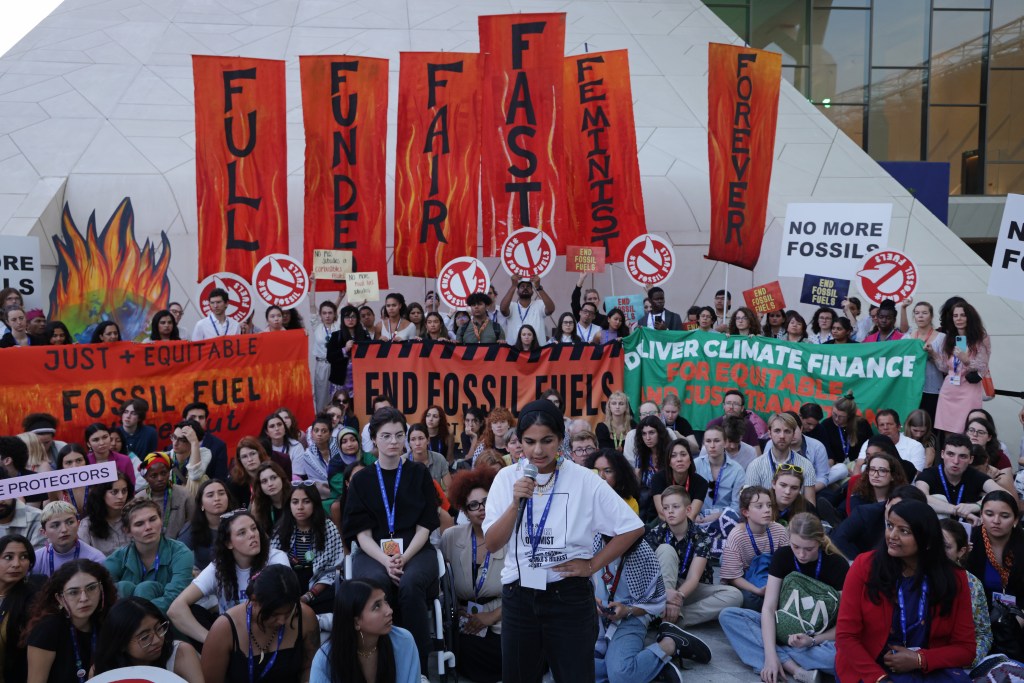BANKING ON IT: Global bank HSBC is joining the Apparel Impact Institute’s Fashion Climate Fund, pledging $4 million over the next three years to finance projects reducing supply chain emissions.
Aii’s FCF is a $250 million hybrid fund that combines contributions from brands and manufacturers, as well as philanthropic donations. Lululemon, H&M Group, PVH Corp. and Target Corp. are corporate backers, as well as H&M Foundation and The Schmidt Family Foundation, cofounded by former Google chief executive officer Eric Schmidt.
The fund was launched in June 2022, with those backers committing to contributing $10 million over eight years to target fashion’s supply chain. It aims to reach $100 million in philanthropic donations, and $150 million each from brands and manufacturers, to unlock an additional $1.6 billion in debt and equity financing for infrastructure improvements.
The London-based HSBC, with a global market capitalization of $148 billion and assets of more than $3 trillion, is the first bank to join the fund. The partnership was announced Sunday, during a panel held at COP28’s Goals House.
“We’re really trying to change the market around sustainable finance, ensuring that suppliers are getting the right kind of financial tools or funding available that make this more incentivized for suppliers,” said Apparel Impact Institute president Lewis Perkins of the group’s overarching strategy.
While the suppliers will do the heavy lifting of securing financing and making infrastructure upgrades, AII aims to “make it more equitable” by both industry and region.
The Rockefeller Foundation is also joining the partnership aiming to support stakeholder engagement as AII ramps up their activations.
The idea is to create better terms for suppliers to upgrade their facilities. The goal is to start at the facility level with brands’ Scope 3 suppliers, such as renewable electricity and waterless dyeing at textile mills and processors, with the intention to extend to the Scope 4 farm and raw material level later on.
AII is looking at facilities that need “bigger capital investments,” Perkins noted, saying there is a “bottleneck, a barrier to incentivize suppliers” to take on the debt to finance these big infrastructure investments.
While the focus will be on upgrading suppliers that work with AII’s brand partners, such as H&M, the programs will not be exclusive. Perkins added that since suppliers provide to a number of brands, there will be a lot of overlap to brands outside the AII universe. “Ultimately AII is trying to support the suppliers on their decarbonization journey and provide funding or opportunities for funding that doesn’t have to just be attached to the suppliers of these brands,” he said. “That’s where there’s a tailwind that’s happening for AII in the industry.”
The group also plans to add more brands to its network, as lead partners of the fund or at lower contribution levels to be able to bring smaller brands on board.
The AII’s “Roadmap to Net Zero” report, updated in June, noted that material processing is 53 percent of the industry’s emissions, and raw material processing contributes 15 percent.
“We’re in the 100-day sprint to develop and put out some specific [financial] vehicles,” said Perkins, and will bring together stakeholders from 22 brands, suppliers and banks to develop these programs, blending capital from all the sectors contributing. Specific announcements are slated for the end of the first quarter or early second quarter of next year.
As far as attending COP28, Perkins said there was a more potent mix of brands and suppliers on the ground engaged outside of strictly fashion-oriented events to learn from different industries.
However, he noted that fashion could — and should — take a bigger part in multilateral talks. “There needs to be more representation from brands in the future particularly as this is a great place to be connecting into country strategies, to be connecting with some of the big financial partners that are in development banks and commercial banks and start to build out programs,” he said. “I think a better COP next year would be to have some more organized participation from the fashion brand retailers, then more suppliers will come.”
WAL TO WALL: Nonprofit group Accelerating Circularity has received a new round of backing of $1.5 million from the Walmart Foundation.
The group’s mission is to create textile-to-textile circular supply chains and keep used textiles out of the waste streams.
“We are fortunate to have the support of the Walmart Foundation to do this next level of work and move closer to realizing our vision of a world in which textiles are no longer wasted,” said Accelerating Circularly president Karla Magruder. “We aim to broaden our engagement as we continue to build the business case for circularity and invite new industry collaborators to join us in this endeavor.”
The follow-up $1.5 million will be used to look at the technical feasibility of textile-to-textile recycling systems.
To that end, Accelerating Circularity will develop a tool to create a waste hierarchy to optimize the flow of used textiles based on their potential to be reused or have the greatest potential for reducing greenhouse gasses, as well as work with brands and retailers in the U.S. to create better disposal and collection systems to keep clothes out of landfill.
Accelerating Circularity also wants to push forward on making textile-to-textile recycling viable by scaling up to what the industry needs to feed its production needs. The group will work on the development of additional circular fibers, yarns and fabrics, and include strategic new geographies to establish sustainable circular supply chains across North and Central America.
It marks Accelerating Circularity’s second grant from the Walmart Foundation. The group received $1.2 million in 2021, and has used the financial infusion to study fabric waste on the East Coast to identify gaps in the recycling and circular chains. The group also launched pilot programs in textile-to-textile recycling to show that it is scalable and can work, in the U.S. and Europe.
VIRTUAL SIGNALING: Inditex rolled out virtual try-on to its youth-skewed brand Bershka. The tech is a virtual fitting room called YourFit powered by 3DLook, which aims to give more accurate size and fit recommendations. The tech aims to reduce product returns from online sales.
“The fashion industry is undergoing rapid transformation, with a strong focus on sustainability and efficiency — and it is up to the industry giants to lead by example. Our virtual fitting room technology has the power to revolutionize the online shopping experience and contribute to the development of a greener, more sustainable and efficient fashion industry by reducing the number of size-related returns and appeal to a younger camera-driven digital generation,” said 3DLook cofounder and chief commercial officer Whitney Cathcart.
The tech is voice guided and uses front and side photos of the customer; the solution’s precise 3D mapping technology and size recommendation engine then offer instant feedback on what size would fit best and provide a highly accurate and photorealistic virtual try-on experience.
Bershka is trailing the tech and it could be expanded to other Inditex brands in the future.
Elsewhere, Inditex’s fast-fashion behemoth Zara expanded its pre-owned resale platform to additional European countries: Austria, Belgium, Croatia, Finland, Germany, Greece, Ireland, Italy, Luxembourg, Portugal, the Netherlands, Slovakia, Slovenia and its home country of Spain. The service was launched in the U.K. in October 2022, and expanded to France in September.



